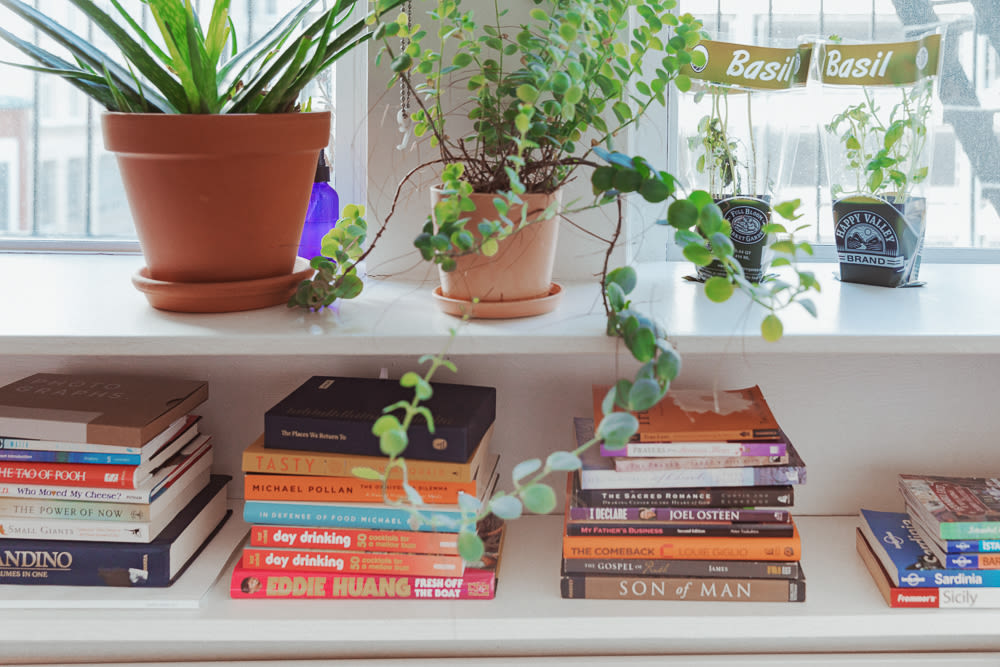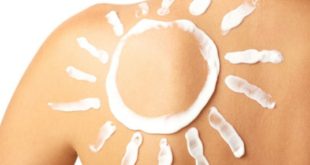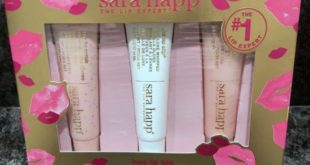
For most people, going totally zero-waste sounds like a daunting if not impossible task. The thing is, Lauren Singer of Package Free Shop has been doing it (gracefully! successfully!) for years. Even in the bathroom. “When I started reducing my waste, I realized I couldn’t keep buying the skincare products I had been using before,” she told ITG. Between plastic microbeads (which are banned now anyway) and lots of plastic packaging, Singer’s old routine just didn’t fit into her new lifestyle. “My mom is from the South, and she was a pageant queen—definitely the full-face makeup kind of woman. I’ve had a skincare routine since I was six because of her, and spent a lot of time thinking I needed to use all those products to look and feel beautiful.” Once she started transitioning to zero-waste, Singer learned two important skincare lessons you probably won’t hear from many other influencers. The first is that she didn’t actually need… anything. After some getting used to, Singer realized her natural skin is A-OK, breakouts and all. And the second is that opting out of the beauty craze is financially brilliant—even when products are cheap, they’re never free. “I was spending hundreds of dollars at CVS every month, and when I stopped, I saved so much money.”
You don’t have to go fully zero-waste to integrate some of Singer’s practices into your everyday life, though she is pretty sure the world at large is moving in that direction. “Change can’t happen overnight, as much as we all want it to, but in the years since I’ve opened Package Free Shop the industry has grown exponentially. I think it’s important to just recognize where companies are at, where the world is at, and take one step at a time.” For Singer, that’s looking for products that are effective, affordable, and whose packaging aligns with her sustainability values. Here, Singer shares five tips to easily make your beauty routine more sustainable. Plus, she swears, you won’t even notice the difference.
Swap out your moisturizer for oil
“I consider my face oil to be my moisturizer,” explains Singer, who’s partial to the Juniper Carrot Seed Oil from Meow Meow Tweet. “It goes on smooth, absorbs quickly, smells like geraniums, and works to brighten and balance my skin.” Just like a moisturizer, an oil can help fortify your skin’s natural barrier and prevent it from drying out. The difference between the two, however, is water: moisturizers have it, oil doesn’t. You’ll probably go through a traditional moisturizer faster than an oil, because the fluffy, emulsified texture just takes up more space. Most moisturizers come in large jars for that reason, and you end up with more excess packaging. An oil is more concentrated, but without water, it also won’t hydrate your skin on its own. Luckily there’s an easy fix: just wet your skin with water first! “I put the oil on after I shower in the morning,” says Singer. “It literally couldn’t be more simple.”
Try a beauty DIY
Lots of beauty ingredients are readily available at your local grocer, and buying natural ingredients raw and in bulk has lots of eco-friendly benefits. First of all, you won’t be stuck with lots of little jars. (One mason jar will do!) And beauty DIYs are made to last—you can make just enough for yourself now, and save the rest of the ingredients for a fresh batch once you run out. If you’re looking to whip up a treatment of your own, Singer suggests starting with body butter. “Body butter doesn’t get super greasy in the summer, and is still heavy enough to moisturize my skin in winter. It saved my cracked hands after using sanitizer through quarantine.” To make Singer’s recipe, you’ll need a glass or heat-resistant bowl, a hand mixer, coconut, cocoa and shea butters, plus a little sweet almond oil. Essential oils for scent are optional! (Follow along with her video once you have everything ready to go.) “I’ve been making my own body butter for a long time now,” she says, “and even though it takes a little time, it’s actually really easy to do.” Singer’s next best thing to DIY-ing it? Linear Beauty’s Shea Body Butter, which she describes as having the consistency of ghee. “I use that all over after a shower or just on my elbows and hands right before bed.”
Switch to reusable cotton rounds
This one’s a no-brainer for the toner aficionado or everyday makeup-wearer who’s looking to be more eco-conscious. “Reusable cotton rounds are a great alternative for anyone who uses makeup removing pads or cotton balls,” says Singer, who notes that it’s literally an exact one-for-one swap. “You use reusable cotton rounds exactly how you would use the disposable kind, but instead of throwing them out, you just wash them with your laundry.” She uses this set of organic cotton rounds, but if you’re looking to take off makeup Face Halos might be a smarter buy. The microfiber rounds pick up makeup like a magnet, so you don’t even have to bother with makeup remover. No matter how you slice it, reusable cotton rounds are actually an upgrade.
Look for refillable makeup products
Luxurious, weighty packaging is the siren call of the makeup aisle—but if you can’t refill it, all of those beautiful compacts and tubes just go straight to a landfill. Instead, look for products with refillable packaging to eliminate some of your single-use packaging. Singer credits her friendship with sustainable makeup artist Katey Denno for keeping her up to date with the best eco-friendly makeup. “Kjaer Weis was one of the first cosmetics brands to offer refills, so when I saved up a little bit of money that was the makeup I invested in,” says Singer. But now, lots of other makeup brands you might not have thought were sustainable offer chic packaging with refillable inserts: Hourglass, Charlotte Tilbury, Hermes, La Bouche Rouge, Givenchy, and Surratt all offer refills to their most iconic products.
Finally, make sure your products are safe to wash off
“I walk a lot because I have a dog, and on the weekends my favorite thing to do is take her on walks around the city with my boyfriend,” says Singer. And though you might not think you need it in wintertime, sunscreen is an all year round must. “It’s so important to protect your skin, but it’s also important to ensure the product you use to do so is water resistant, biodegradable and reef safe.” If you’re not sure about your favorite sunscreen, there are a few easy rules of thumb you can follow. First off, the ingredients oxybenzone and octinoxate were notoriously banned in Hawaii for contributing to coral distress. If you prefer chemical sunscreen, try using sunscreen from Korea or Japan—these usually use different filters than we have access to in the US. Or, mineral-based sunscreens that use non-nano zinc and titanium dioxide are always reef-safe. The tinted one from Raw Elements is Singer’s favorite. “I love how it gives me a little bit of a glow.”
Photo via ITG



